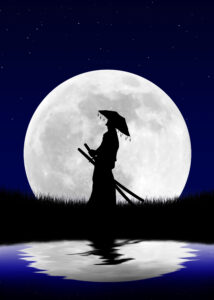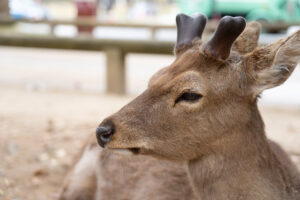Nestled in the heart of the Pacific, Hawaii stands as a testament to the enduring bond between the island chain and Japan. Through waves of migration, shared cultural values, and economic ties, Japan has left an indelible mark on the Hawaiian Islands. This connection, woven over centuries, showcases a unique fusion of traditions, cuisines, and ideologies, enriching the social fabric of Hawaii. As we explore the multifaceted relationship between these two Pacific powers, it becomes clear that the Japanese influence in Hawaii is more than a historical footnote; it’s a living, evolving legacy that continues to shape the islands’ future.
1. Dawn in Paradise: The Japanese Influence in Hawaii
The story of Japanese influence in Hawaii begins in the late 19th century, with the arrival of the first Japanese immigrants. These pioneers came seeking new opportunities, and what they found was a place that would soon become a new home, blending their traditions with the local culture. Over the decades, the Japanese imprint on the islands has grown, touching everything from religion to language, and setting the stage for a cultural fusion unique to Hawaii. This fusion is evident in the celebration of Japanese festivals, the integration of Japanese words into the Hawaiian lexicon, and the architectural landmarks dotting the islands, like the Byodo-In Temple, a replica of a similar structure in Kyoto.
2. From Sakura to Aloha: A Cultural Fusion
The blend of Japanese and Hawaiian cultures has created a unique cultural tapestry. Festivals such as the Cherry Blossom Festival in Honolulu highlight the symbiotic relationship between the two cultures, celebrating the beauty of sakura while embracing the aloha spirit. Schools across Hawaii include Japanese language and cultural studies in their curriculum, fostering an appreciation for the rich heritage of Japan among generations of Hawaiians. This cultural mingling can also be seen in the popularity of hula performances in Japan, a testament to the mutual respect and admiration between the two cultures.
3. Plantation Beginnings: The Roots of Migration
The initial wave of Japanese migration to Hawaii was largely driven by the demand for labor on sugar plantations. Arriving in the late 1800s, these Japanese immigrants, or "Issei," worked under challenging conditions, yet they persevered, laying the foundations for a vibrant Japanese community in Hawaii. The plantation lifestyle necessitated the creation of a new cultural identity – one that retained Japanese traditions while incorporating elements of Hawaiian and other cultures. This blend of influences paved the way for future generations, known as "Nisei," to explore new opportunities beyond the plantations, significantly impacting Hawaii’s economic and social landscapes.
4. The Nisei Generation: Building Bridges
The Nisei generation, born to the original Japanese immigrants, played a crucial role in bridging the gap between Japan and Hawaii. Fluent in both English and Japanese, they facilitated cultural exchange and mutual understanding. During World War II, the Nisei’s loyalty was tested, but many served valiantly in the U.S. military, earning respect and recognition for their contributions. Post-war, the Nisei generation continued to foster connections between Japan and Hawaii, contributing to the economic, political, and cultural vibrancy of the islands.
5. Culinary Crossroads: Japan Meets Hawaiian Cuisine
Japanese influence on Hawaiian cuisine is unmistakable, giving rise to unique dishes that blend the flavors and traditions of both cultures. Poke, a traditional Hawaiian dish, has evolved to include Japanese ingredients like soy sauce and green onions, while sushi and ramen have become staples in Hawaii’s culinary scene. This fusion cuisine not only delights the palate but also serves as a delicious metaphor for the blending of Japanese and Hawaiian cultures, illustrating how two distinct traditions can come together to create something new and exciting.
6. The Spirit of Obon: Japanese Traditions in Hawaii
The Obon festival, a Buddhist event honoring ancestors, is celebrated with great fervor in Hawaii, showcasing the enduring Japanese traditions. During Obon, communities come together to dance, enjoy Japanese foods, and remember their ancestors, highlighting the strong ties many Hawaiians have to Japan. This festival, along with other Japanese traditions such as mochitsuki (mochi-pounding) and the New Year’s Ohana Festival, continue to thrive in Hawaii, preserving the Japanese heritage while embracing the diverse cultural landscape of the islands.
7. Economic Ties: From Investment to Innovation
Japan’s economic influence in Hawaii extends from significant investment in real estate and tourism to collaborations in renewable energy and technology. Japanese companies have long viewed Hawaii as a strategic partner and gateway to the U.S. market, leading to substantial investments in the islands. This economic relationship has also spurred innovation, with joint ventures in areas such as oceanic research and clean energy development, showcasing the potential of cooperation between Japan and Hawaii for sustainable growth.
8. Education and Exchange: Fostering Future Leaders
Educational exchanges between Japan and Hawaii have opened up avenues for mutual understanding and friendship. Numerous programs offer students the opportunity to study abroad, immersing themselves in each other’s cultures and educational systems. These exchanges not only bridge the geographical distance between Hawaii and Japan but also prepare a new generation of leaders who are knowledgeable about and sensitive to the intricacies of both societies.
9. Political Presence: Japanese Americans in Office
Japanese Americans have made significant strides in Hawaii’s political landscape, serving in various capacities from local government to the U.S. Congress. Their representation and leadership have been instrumental in shaping policies that reflect the diverse interests of Hawaii’s population, including those of the Japanese American community. This political engagement is a testament to the progress made since the days of plantation labor, highlighting the role of Japanese Americans in the democratic process and governance of Hawaii.
10. Beyond Tourism: Deepening Japan-Hawaii Connections
While tourism from Japan plays a vital role in Hawaii’s economy, the relationship between Japan and Hawaii goes much deeper. Cultural exchanges, educational programs, and economic partnerships contribute to a robust connection that extends beyond the superficial ties of travel and tourism. These deeper connections foster a greater understanding and appreciation between the people of Japan and Hawaii, laying the groundwork for a future of continued cooperation and friendship.
11. Artistic Alliances: The Aesthetic Blend of Cultures
The artistic collaboration between Japan and Hawaii is evident in various forms, from music and dance to visual arts and theater. This blend of artistic traditions enriches the cultural landscape of Hawaii, offering residents and visitors alike the chance to experience the beauty of both Japanese and Hawaiian art. These alliances not only celebrate the aesthetic achievements of each culture but also highlight the creative possibilities that emerge from their fusion.
12. Looking Forward: The Next Chapter in Japan-Hawaii Relations
As we look to the future, the relationship between Japan and Hawaii continues to evolve. With a foundation built on shared history, cultural exchange, and economic partnership, the potential for further cooperation is boundless. From addressing global challenges such as climate change to exploring new frontiers in technology and art, the bond between Japan and Hawaii is poised for growth. This enduring partnership, characterized by mutual respect and collaboration, promises to shape the destinies of both regions for generations to come.
The sun continues to rise on the relationship between Japan and Hawaii, illuminating a path of shared progress and mutual enrichment. From the early days of plantation labor to the complex web of cultural, economic, and educational ties that bind them today, Japan and Hawaii have forged a connection that stands as a model of international friendship and cooperation. As we celebrate the achievements of this partnership, we also look forward with anticipation to the new chapters yet to be written in the story of Japan and Hawaii, confident that the best is yet to come.








